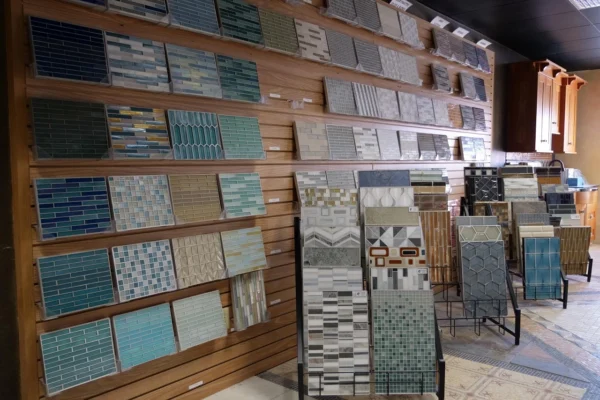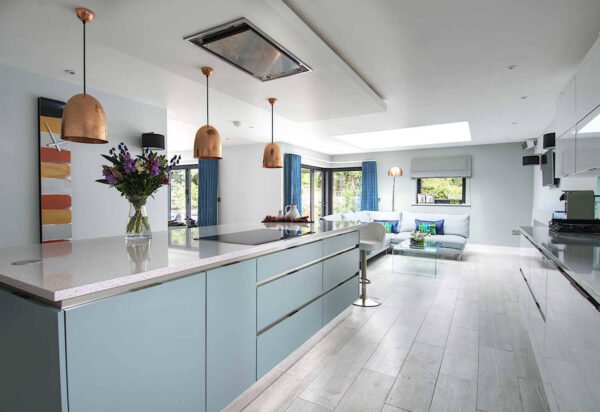
Repair or Replace: How Much Could You Save on Home Repairs?

There is a common complaint that today’s generation ‘doesn’t do repairs’. Whereas appliances of old were seen as a life-long investment, our 21st-century culture of fast fashion, faster technology and, of course, a veritable drought of that precious commodity ‘time’, people are predisposed to simply discarding whatever it is that’s broken for a newer model.
“Sometimes, replacing is actually the best option all round,” says Ian Greenhalgh from glass repair specialists Cloudy2Clear. “For example, the cost of repairing your already-obsolete iPhone just can’t be justified if you can upgrade to a new one for the same price. You’re better off selling it for parts on eBay and putting the money to your new contract.”
When it comes to your home, though, it can be tricky to determine what needs to be replaced altogether and what can be salvaged if you’re willing to dust off the cobwebs on your toolkit in the attic.
To help you make the right choice, experts at Appliance Repair Stars have laid out some useful tips to answer the question: should you repair it or replace it?
If you aren’t experienced in repairing goods with electrical wiring in them, seek out a professional who will also make sure every electronic device has a Circuit breaker that helps to interrupt current flow to protect equipment and to prevent the risk of fire. If you need to buy circuit breakers, make sure to order from legit suppliers. No monetary saving is big enough to justify risking your life!
Signs that you should repair or replace

When you’re looking at whether to repair or replace, there are a few rules of thumb that can help you make the right decision. For instance, if you notice cracks on your home’s foundation, then this should be repaired immediately with the help of a foundation repair contractor to avoid major issues in the long run.
The 50% rule
The 50% rule is a simple way of weighing up the cost of repairs against a replacement. It roughly works like this:
If a repair can be completed for less than 50% of the cost of replacement, you should choose to repair.
For example, if it costs £150 to repair your TV and £400 to buy a new one, you should repair the TV rather than replace it.
However, the 50% rule is only an initial guideline, so it doesn’t apply in all scenarios. Below are some instances in which you should commit to a replacement even if repairs would cost less than half the investment.
When you should replace rather than repair
- The item is near or beyond its expected life
- The item is unreliable and the consequences of failure pose an unacceptable risk
- The repair cost exceeds the life cycle cost of a new appliance (especially relevant if it looks like the appliance will repeatedly fail)
- If it can’t be repaired to the level where its performance is acceptable
- The existing appliance is technologically obsolete
What’s the salvage value?
You should also consider the salvage value of the item in question. Salvage value is simply the amount of money you can get back if you sold your old item.
Large items like refrigerators or washing machines can often have significant salvage value because they contain plenty of otherwise-expensive parts. Selling on to a willing buyer can help you recoup some of your losses to go towards a new model.
Consumer electronics, on the other hand, don’t often fare well given the fast range of change. A laptop or games console can be completely obsolete in as little as five years, so you shouldn’t expect to salvage a significant cost.
Common household items: repair or replace?
With all of the above in mind, let’s take a look at some long-term household items that you might find springing a leak or blowing a fuse in their lifetimes and determine when you should repair and when to replace.
1. Refrigerator
Average lifespan: 13 years
Repair or replace?: REPAIR
The fridge is perhaps the only household appliance that gets left on literally all the time — even when we go on holiday. Naturally, that means our refrigerators endure plenty of wear and tear over their lifetime — and some can pop their clogs earlier than others.
There are a lot of parts to a fridge, so it could be a small one that’s causing a bigger issue. Different elements are harder to replace than others, both in labour costs (assuming you’re not a fridge repairman) and for the components themselves.
You’ll need to assess whether or not a new fridge will fit into the same space. If your fridge is built into your kitchen, the cost to replace might be higher because you’ll need to make changes to the cabinetry, too; so for this, a refrigerator repair service would be the best option. If you need commercial kitchen equipment, you can get it from here! That all adds up to far more than it would be to do the repairs.
2. Washer-dryer
Average lifespan: 11 years
Repair or replace?: REPLACE
Though not quite as heavily relied upon as the fridge, washer-dryers can be a huge pain when they break. There are only so many clothes you can go through before you run out, so determining whether to repair or replace is often a matter of urgency.
Unfortunately, modern washing machines aren’t really built to last. Many are microchipped, which are difficult to replace if they break, and other machines have sealed drums, which drives the cost of repair into the hundreds of pounds — difficult to justify when the cost of a new washing machine can be less than £200.
Lastly, newer machines tend to be more energy-efficient as technology evolves. Since washer-dryers are one of the most energy-intensive appliances in the house, you could save a lot of on energy bills by choosing not to extend the life of an old electricity guzzler.
3. Oven
Average lifespan: 14 years
Repair or replace?: REPAIR
Ovens can break for a variety of reasons. Gas ovens can have faulty igniters that stop them from heating up at all, and electric ovens can have broken heating elements.
The thing is, these parts are usually pretty cheap to replace and, as long as you take the right precautions (disconnecting your ovens from the mains supply is essential), you should find it fairly straightforward to replace them.
The other thing to consider is that many ovens are built into the cabinetry of your kitchen so arranging a replacement may involve a lot of additional work making sure the new fit is correct and ensuring all wiring is reconnected properly.
This is a close one, though. New ovens aren’t as expensive as you might expect — today, you can get one for £150-£300. If the issue with your oven isn’t as simple as a faulty part, the cost of labour for repairs will start to add up, so a replacement might be your better option.
4. Leaky taps
Average lifespan: 20 years
Repair or replace?: REPAIR
Kitchen and bathroom taps aren’t subject to the threat of obsolescence in the same way that your appliances might be.
However, they do endure plenty of wear and tear. Over time, parts in your taps can become loose, causing them to leak. That starts to push your water bill higher and higher if it’s not addressed soon.
Any repairs you can do on a tap can be done yourself with a wrench and, occasionally, a couple of replacement parts.
Occasionally, though, the tap will still leak after the easy fixes. If this is the case, you’ll need to replace the whole system. Full tap replacements by a qualified plumber are between £25 and £50 plus the cost of parts, so around £100 total.
Don’t worry — you might be able to mitigate those costs with a handy YouTube tutorial.
5. Drafty windows
Average lifespan: 20+ years
Repair or replace?: REPLACE
When people think about replacing windows, it can often seem scarily expensive. The problem is that they’re not actually thinking about the cost of replacing the windows but the cost of replacing the frame.
Good window frames can last a lifetime. The cost of replacing window frames is so high because frames are built into the brickwork — they essentially have to be carefully destroyed without leaving any residue or damaging the surrounding area, which would make it difficult to add a new frame.
However, you can replace a windowpane without replacing the frame. A lot of drafty windows are caused by poor pane installation or a gap in between the pane and frame that lets in moisture and lets out heat. That means you just need experts who can quickly remove the pane and replace it while leaving the frame intact.
Final thoughts
Knowing whether to repair or replace isn’t often straightforward, but with some thought and troubleshooting, it’s much easier to determine the most economical option.
Using the 50% rule and the item lifespan is a fantastic way to simplify the options available to you while understanding common problems with bigger appliances can help you spot the fix early.















































